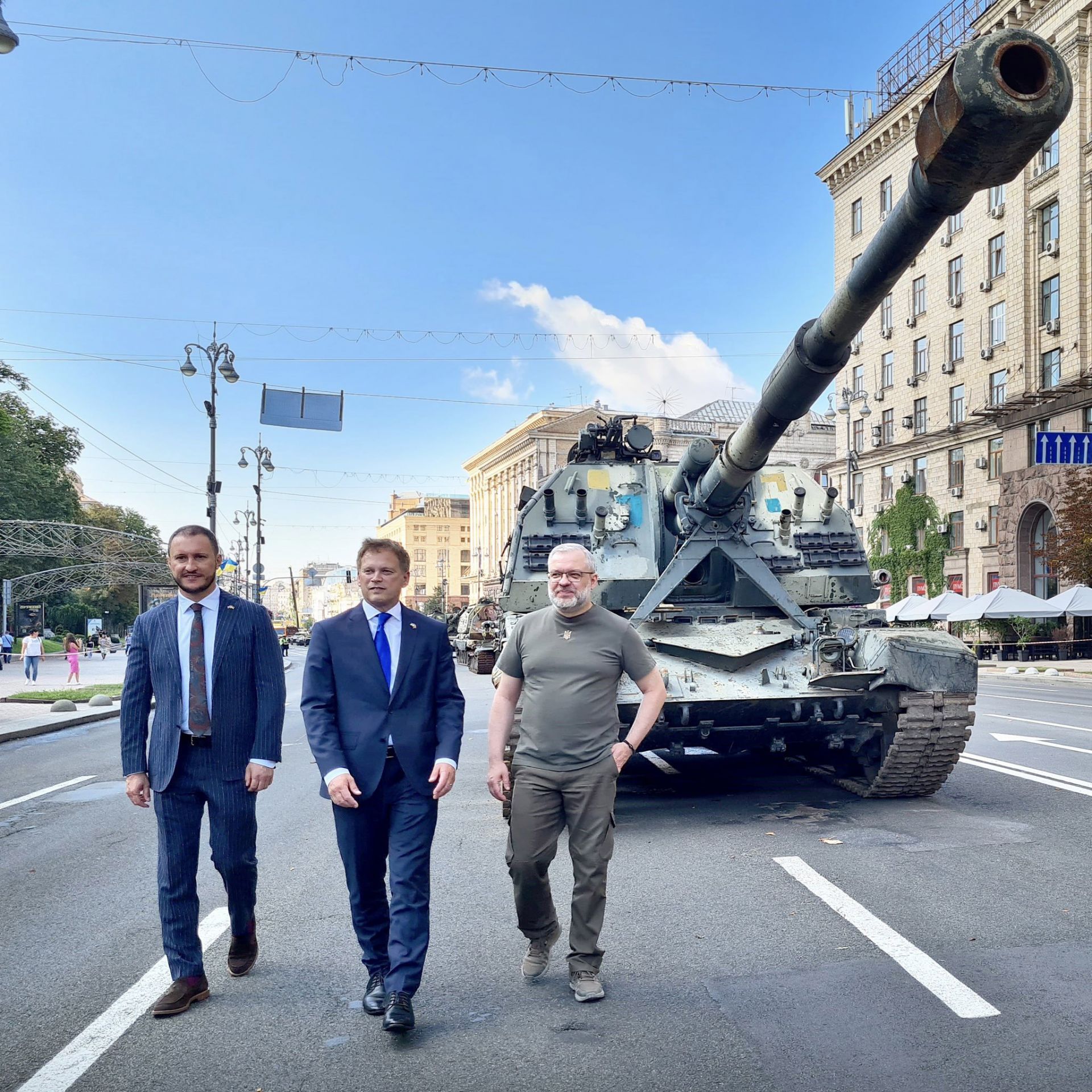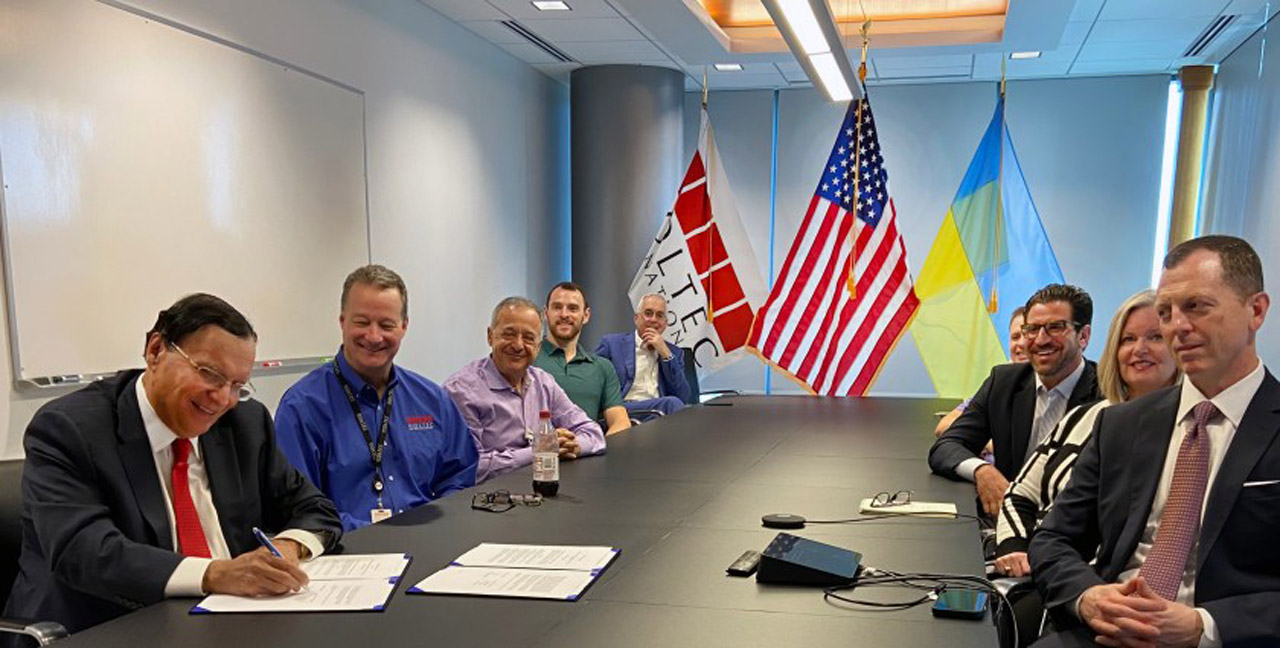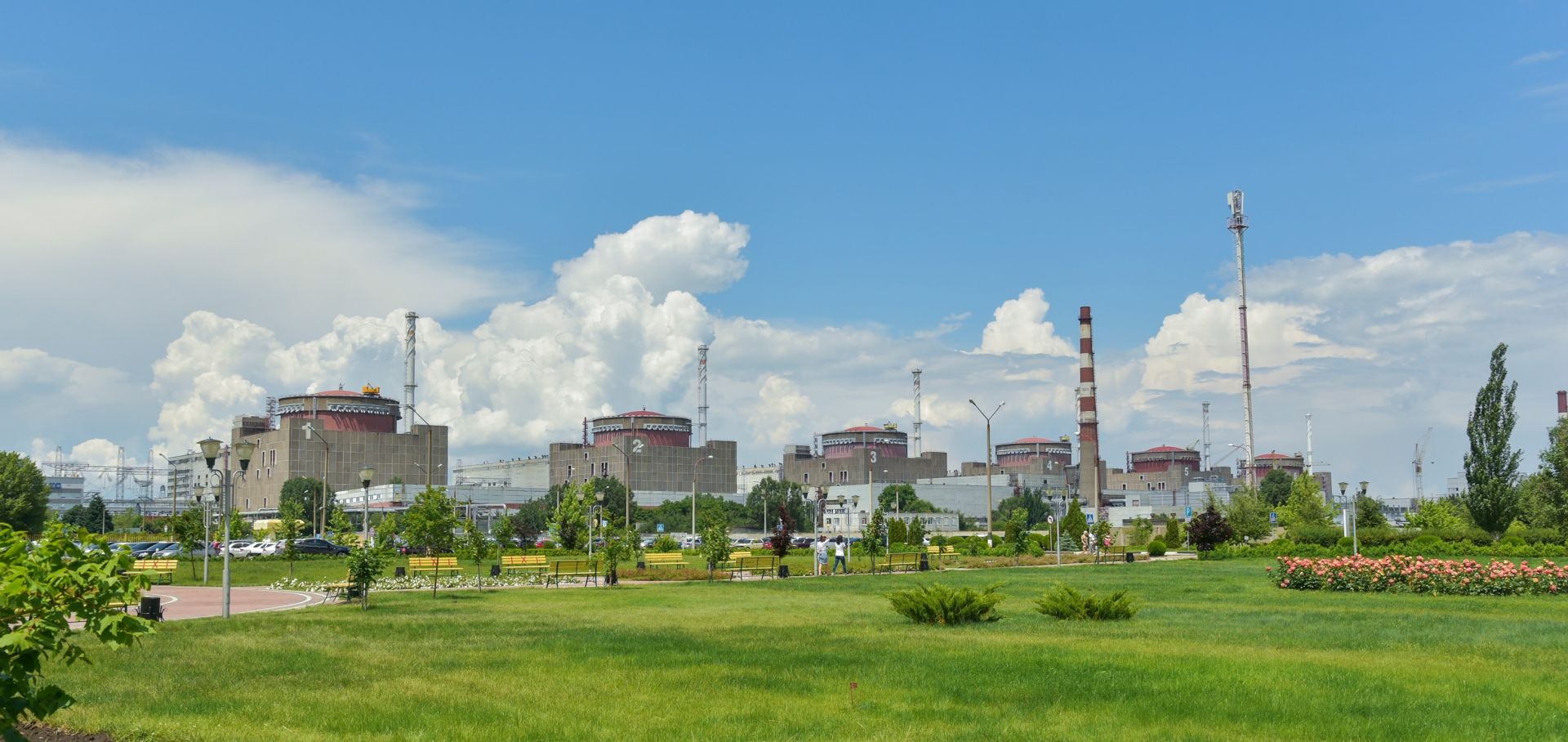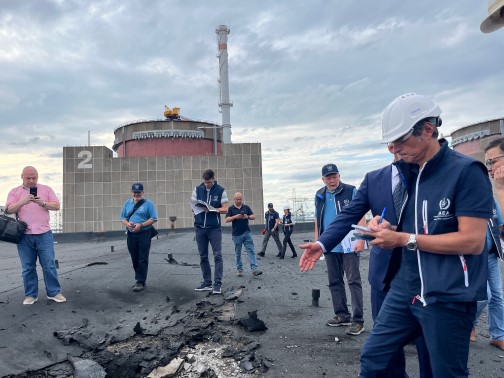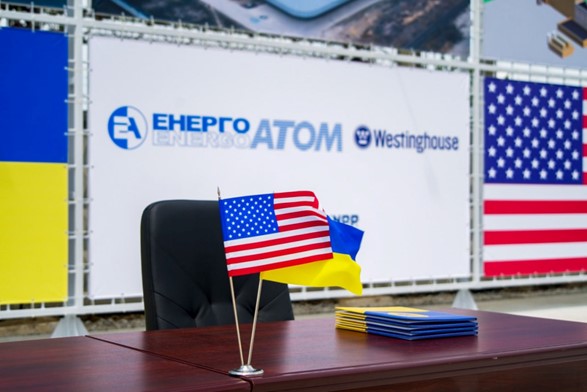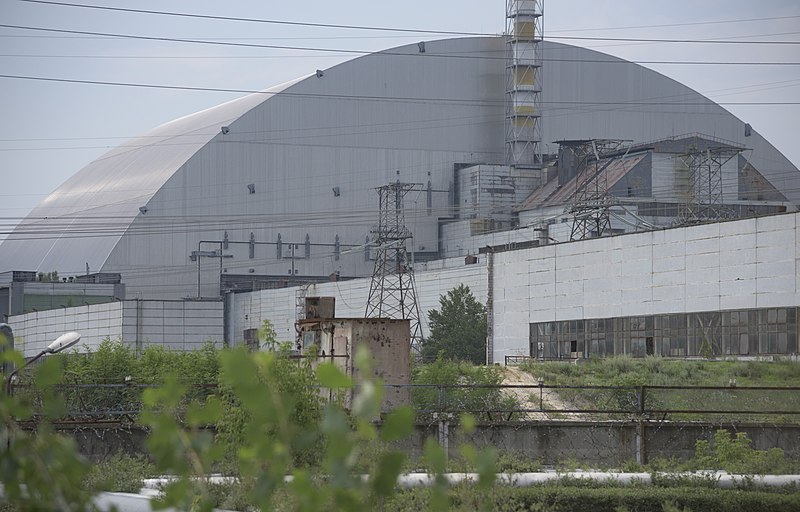Westinghouse president and CEO Patrick Fragman (seated at left) and Energoatom president Petro Kotin (seated at right) sign an MOU on AP300 deployment in Ukraine. Standing behind Fragman and Kotin is Ukrainian energy minister German Galushchenko. (Photo: Energoatom)
Westinghouse Electric Company and Ukraine’s nuclear operator Energoatom have signed a memorandum of understanding on the development and deployment of the American firm’s AP300 small modular reactor in the Eastern European state.
Kris Singh (front left), Holtec International president and chief executive officer, signs the cooperation agreement between Holtec and Ukraine’s Energoatom, alongside other Holtec officials. (Photo: Holtec)
Small modular reactor developer Holtec International and Energoatom, Ukraine’s nuclear plant operator, signed a cooperation agreement last Friday that envisions the construction of up to 20 of the American firm’s SMR-160 units in Ukraine, with grid connection for the pilot project achieved by March 2029. In addition, the agreement calls for building a Ukrainian manufacturing facility to localize the production of equipment required for SMR-160 construction.
The Zaporizhzhia plant (Image: Energoatom)
As if being stuck in the middle of a combat zone isn’t sufficiently nerve-racking, workers at Ukraine’s Zaporizhzhia nuclear power plant—under Russian occupation since last March—must now concern themselves with having access to enough water to keep the facility safe.
The Rivne nuclear power plant in western Ukraine, home to four VVER pressurized water reactors. (Photo: Victor Korniyenko/Wikipedia)
In what it is calling a “major expansion” of its efforts to prevent a severe nuclear accident befalling Ukraine, the International Atomic Energy Agency yesterday announced that it is deploying teams of nuclear security and safety experts this week to the beleaguered nation’s nuclear power plants and the Chernobyl site. (The agency has already stationed a team of experts at Ukraine’s largest nuclear facility, the six-unit Zaporizhzhia plant, which has been under Russian military occupation since last March.)
IAEA director general Rafael Mariano Grossi (at right) inspects damage at Ukraine’s Zaporizhzhia plant on September 1. (Photo: Fredrik Dahl/IAEA)
A group shot of Energoatom and Westinghouse personnel at the Khmelnytskyi nuclear power plant in Ukraine, where the first two AP1000 reactors under a recent agreement will be constructed. (Photo: Westinghouse)
The war in Ukraine notwithstanding, Westinghouse Electric Company has stepped up its partnership with Energoatom, Ukraine’s state-owned nuclear utility, signing agreements last week to supply all of the nuclear fuel for the country’s operating reactor fleet and to collaborate on the construction of nine AP1000 units for Ukraine, rather than the five earlier envisioned.
The New Safe Confinement structure over the damaged fourth reactor at the Chernobyl nuclear power plant. Photo from 2018.
Ukraine’s nuclear operator, Energoatom, announced yesterday that the Russian military has withdrawn from the Chernobyl plant and surrounding area. “According to the staff of the Chernobyl nuclear power plant, there are now no outsiders on-site,” Energoatom stated in an online post. Russian forces took control of Chernobyl on February 24, day one of the invasion.
In a separate post, the company said that the Russians had formally agreed to return the responsibility for Chernobyl to Ukraine. It shared a scan of a document, with the heading “Act of acceptance and transfer of protection of the Chernobyl nuclear plant,” purportedly signed by a representative of Russia’s National Guard, a representative of Rosatom, Russia’s state atomic energy corporation, and a Chernobyl plant shift manager.



